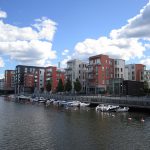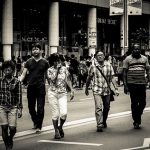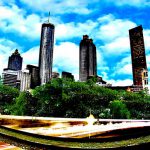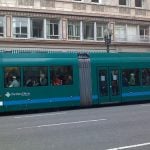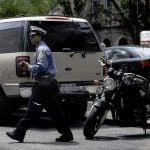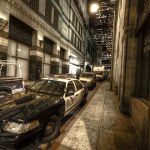L.A. strives for sustainability
Smog, traffic, countless cars: Los Angeles strives to re-frame itself as a sustainable city. As Slate recently reported, L.A. has a bad rap for being environmentally-unfriendly. In early April, the governor announced California’s first mandatory restrictions on water use, and Mayor Eric Garcetti’s new sustainability “pLAn” outlines a number of goals, including removing coal from the city’s energy portfolio and diverting the majority of waste from landfills by 2025.
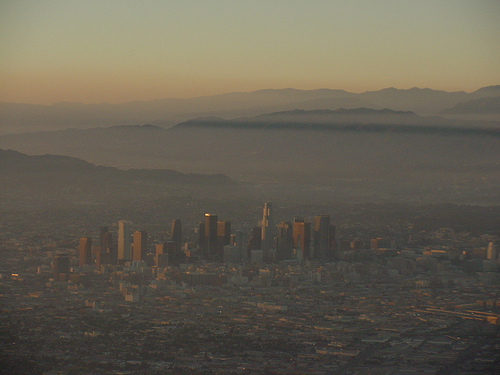
A skyline hindered by smog. Image from TravelingOtter.
How does a city become more sustainable? In Los Angeles, there have been a number of improvements already. Officials note the city’s population has grown by over 1 million in the past three decades, but L.A. uses the same amount of water. L.A. is investing in public transportation, and from 2005–2009, the metro area became more compact. Two-thirds of new housing was built on previously-developed land.
L.A.’s changes can serve to inspire “other not-so-green cities,” reports Slate. The city “started out as very strange, unlike the urban model found in Europe and the Northeast. And then it became more normal, as other places were similarly built around the automobile, subdivisions, and strip malls.” L.A. is becoming denser, more transit-centric, and less like the recognizable spread-out suburb that defined it.
Sustainability is also a persistent buzzword outside of L.A., and there’s plenty of inspiration to draw from, too. The City of Angels might take some cues from Vinge, a newly designed sustainable city in Denmark. The city north of Copenhagen is designed around a train hub in the city center. Vinge is imagined as an interconnected city, with 4,000 work sites near residences, sports centers, public areas, schools, and other buildings.
As Railway Technology reports, a transit-centric city has the power to connect, not split, residents. “Train stations and tracks often divide the city in two. The main thing in this design was to link the two sides of the city. You then get a city that’s connected with life going on in both parts – there’s no bad south side or good north side,” said Niels Edeltoft, Vinge project director.
“The station is a symbol of a city that’s connected,” Edeltoft continued. “The challenge was to make this station part of the landscape and not just a bridge crossing the rails. We made the station so that nature and landscape merged together with the city’s urban features. It’s a greenfield site turning more into an urban space around the station but still with its green elements. It’s a mixture of nature and urban space.” The city plans also include a “Green Zone,” which incorporates gardens, city parks, natural wetlands, and recreational areas in the city center.
Meanwhile, Pope Francis is addressing the greater issue behind sustainability — climate change — on a grander scale. Pope Francis held a climate change summit at the Vatican last week with United Nations Secretary-General Ban Ki-Moon. The “Green Pope” is also working on a major statement on the relationship between people and the Earth, to be released as soon as June.
As the National Journal notes, Pope Francis “has framed climate change as a moral issue, highlighting its impact on the poor.” Earlier this year, Pope Francis also clarified matters for climate change disbelievers, saying in the Philippines “climate change was ‘mostly’ man-made,” and that “[I]n great part, it is man who has slapped nature in the face.”
Related Posts
Category: News, Transportation











